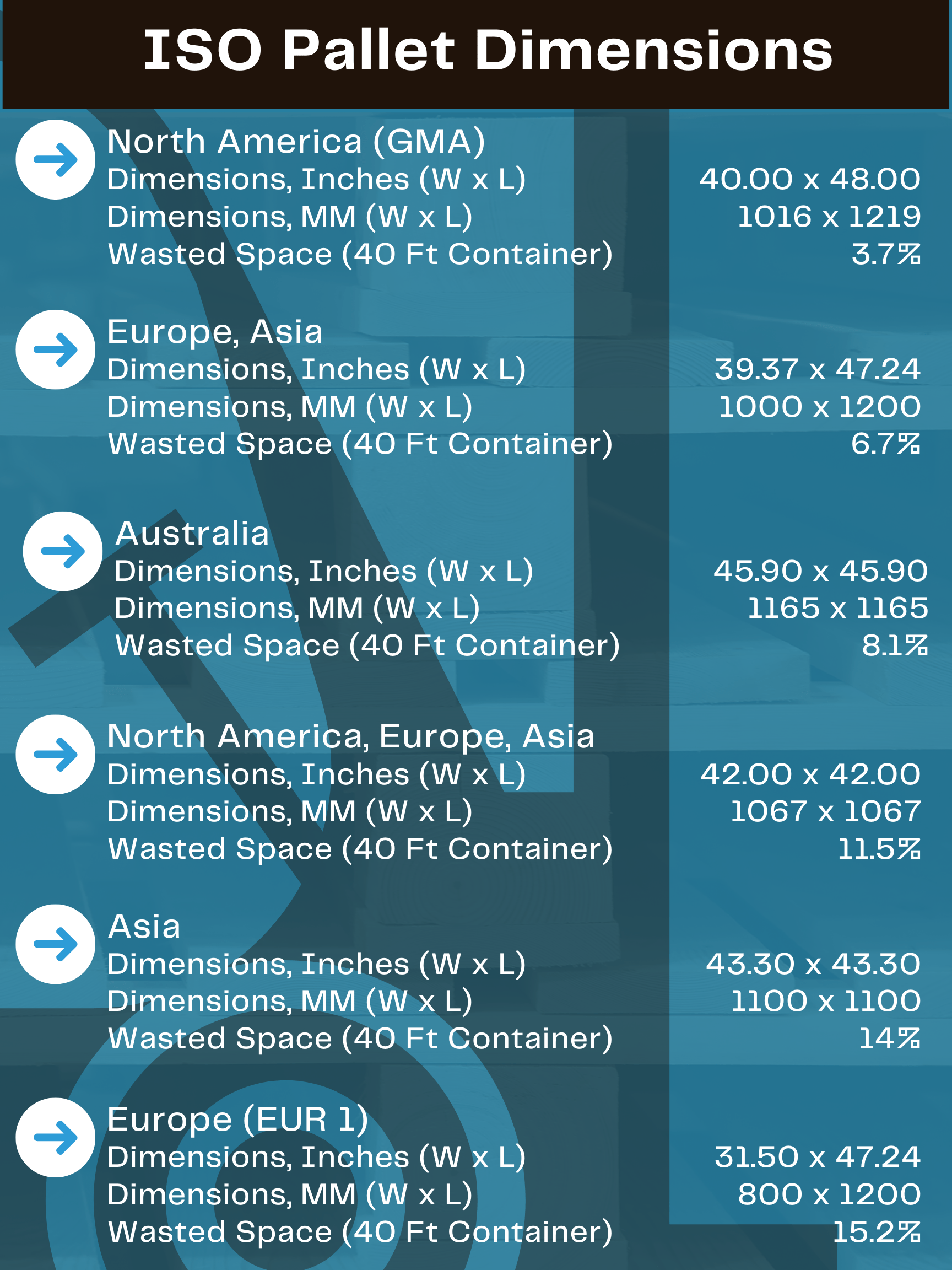
Pallets are a simple and cost-effective way to move goods from one place to another. They are used in many different industries, including manufacturing, retail, warehousing, wholesale distribution and more. A pallet can be thought of as a “platform for handling” that offers an efficient means of moving products around the supply chain.
Pallets come in many sizes and shapes so they can meet individual needs or requirements, but they all have their own set of standards that need to be met when being manufactured or used in order to ensure safety for both people and product. In this article we will go over the different types and standards that apply to pallets so that you know what is best for your needs.
There’s no single dimensional standard for pallets, but some of the most popular types are the standard pallet, euro pallet, and skid.
Standard Pallet: The most common type of pallet in use today is called a “standard” pallet, or a GMA Pallet. They measure 48 x 40 inches (122×102 cm). These dimensions include space for handling on all four sides which makes it easy to load from any direction – front, back, side or top. Pallets of this size are used in a wide variety of industries and applications.
Euro Pallet: A Euro Pallet (EPAL) is the same dimensions as a standard pallet but it has a different shape that allows it to be transported on forklifts with blades that fit between the slats on the pallet. EUR-Pallets also have a different type of lift on the bottom which allows forklifts to pick them up from underneath and carry them easily.
Skid: A skid is another popular pallet size, particularly in retail and shipping applications – although they can be used anywhere that standard pallets are used as well. They measure 36×48 inches (91.44×121.92 cm) and have a height of about six inches (15.24 cm). Skids are typically made out of wood but can also be made from plastic or metal.
Pallets are also categorized by the standards they meet. Some of the most common types of pallet standards include:
ANSI Pallets – The American National Standards Institute (ANSI) is a private, non-profit organization that oversees many different national and international product safety standards for both consumer products and industrial equipment. ANSI pallets are typically made of wood and measure 44×40 inches (112.12×101.60 cm). These pallets can be used in most applications, but they aren’t as easily moved using forklift blades so they tend to work best with manual handling methods only.
DOD Pallets – The Department of Defense (DoD) pallet is the pallet that was originally designed for use in military operations. They measure 48×43 inches (121.92×109.22 cm) and have a load capacity of about 2000 lbs or 9000 newtons when evenly distributed across an area of 33 x 44 inches (83.82×111.76 cm). The DoD pallet is made of wood and plastic and can be used in most applications.
IPPC Pallets – The International Plant Protection Convention (IPPC) pallet is a pallet designed specifically for the transportation of goods that may pose a risk to plant life or agriculture. IPPC pallets meet strict sanitary requirements and are often made of plastic or metal.
Other Pallet Standards – There are many other pallet standards out there, such as the NFPA (National Fire Protection Association) and GLI (Global Logistic International). They all have their own particular uses so it’s important to know the standard that applies in your industry or application when choosing a pallet for use.
The different types and standards of pallets can be a bit confusing, but it really doesn’t have to be. In fact all you need is one good reference or resource that has the information about pallet sizes and dimensions along with which standard applies in your industry.
